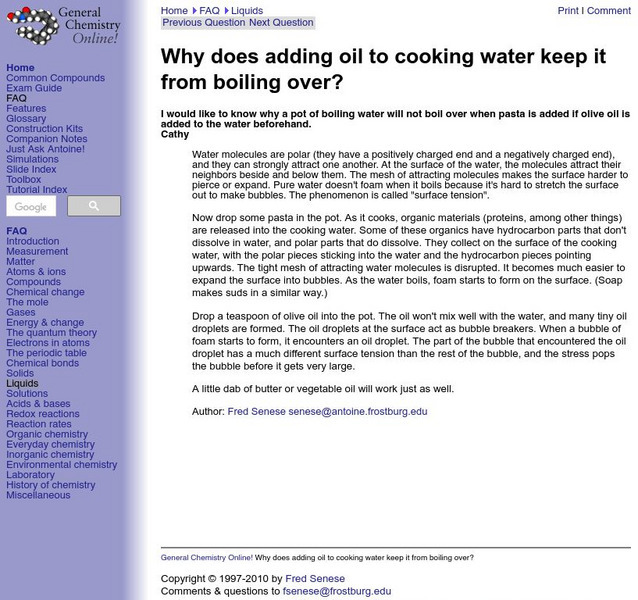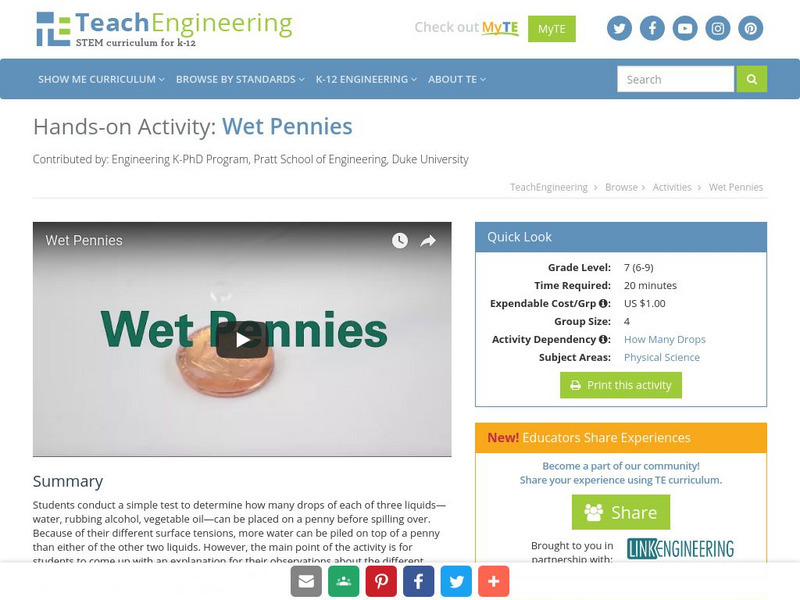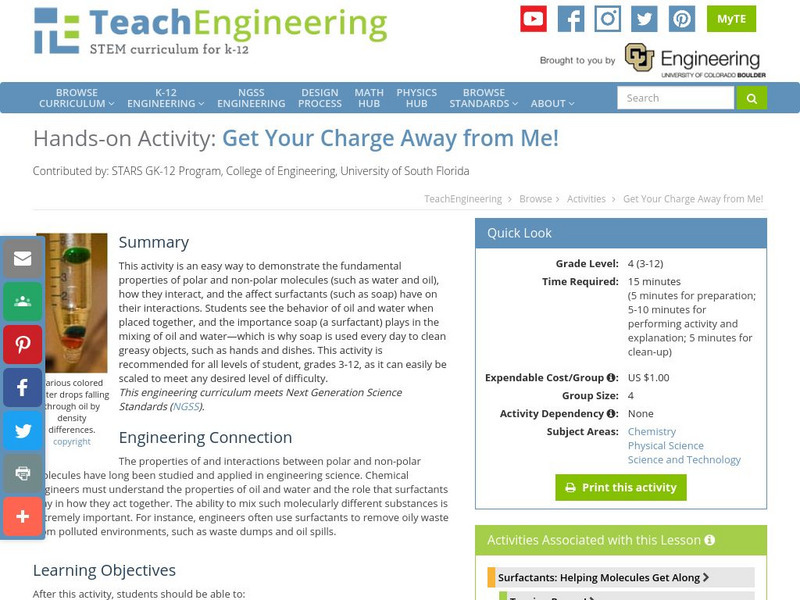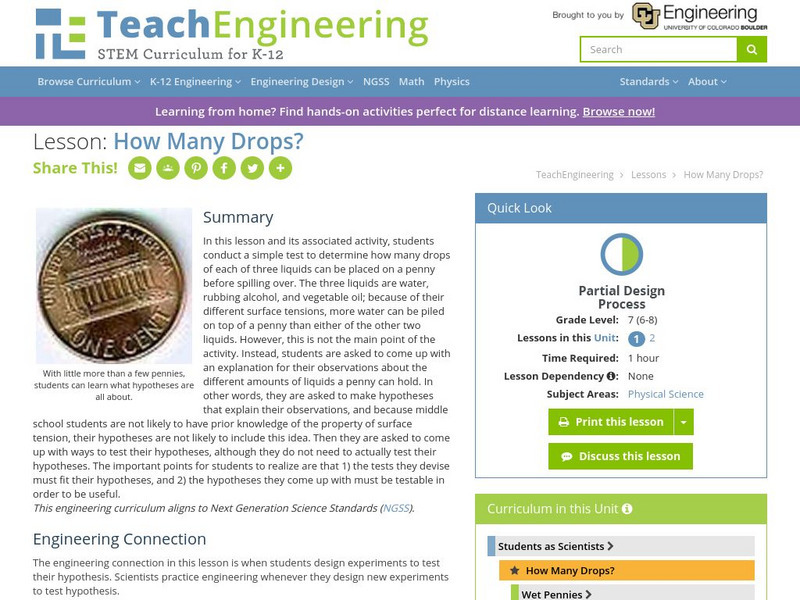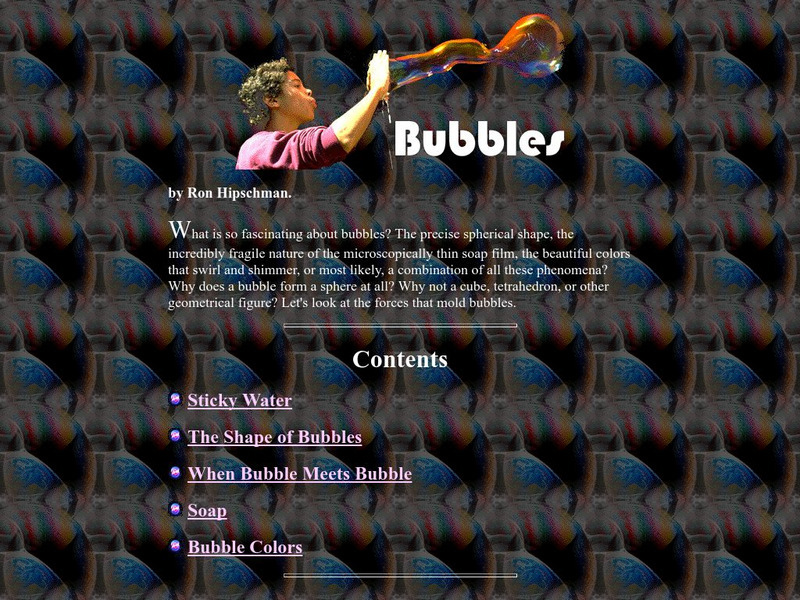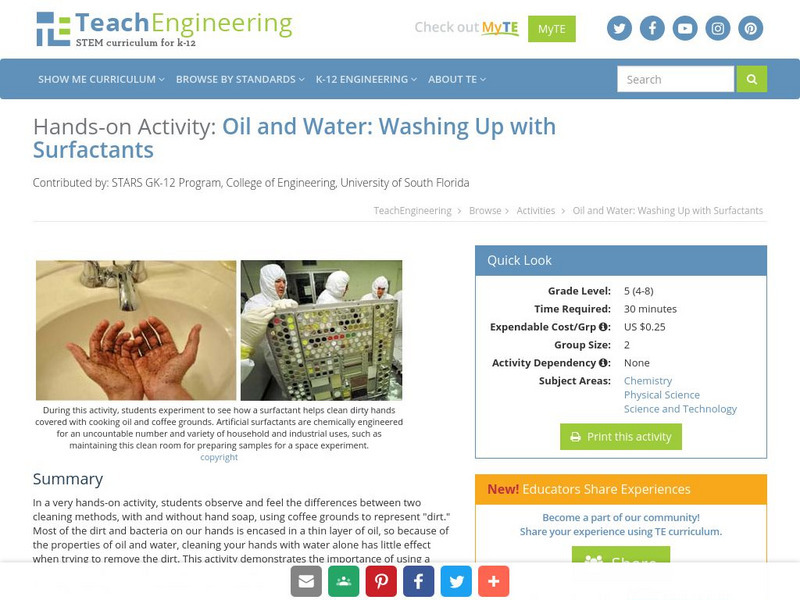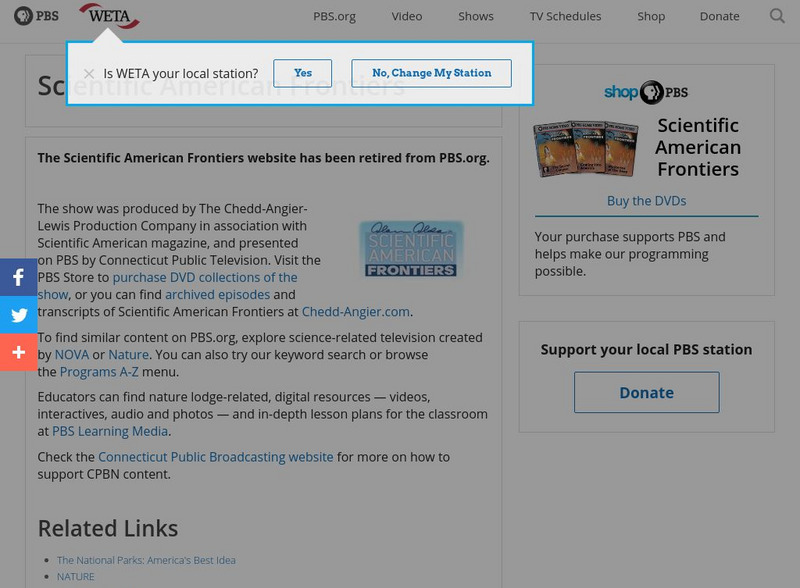Sophia Learning
Sophia: The Properties of Water: Lesson 4
This lesson will provide an understanding of the chemical and physical nature of water. It is 4 of 4 in the series titled "The Properties of Water."
Sophia Learning
Sophia: The Properties of Water: Lesson 1
This lesson will provide an understanding of the chemical and physical nature of water. It is 1 of 4 in the series titled "The Properties of Water."
TOPS Learning Systems
Tops Learning Systems: Top Science: Water Domes [Pdf]
Investigate the cohesive tension on the surface of water.
Frostburg State University
Frostberg University: Surface Tension in Liquids
Explains the role of surface tension in a liquid and how oil can be used to keep water from boiling over.
Middle School Science
Middle School Science: "Sinkin' Lincoln" Lab (Lesson Plan)
In this lesson plan site, students will "Define surface tension, determine what factors affect surface tension, and collect data on how many drops of water a penny can hold."
University of South Florida
Fcat: Drops on a Penny: Teacher Notes
Students learn how to create stem-and-leaf diagrams and boxplots by collecting data on the surface tension of water molecules. This hands-on activity using pennies is a great way to learn how to organize data.
TeachEngineering
Teach Engineering: Wet Pennies
Students conduct a simple test to determine how many drops of each of three liquids can be placed on a penny before spilling over. The three liquids are water, rubbing alcohol, and vegetable oil; because of their different surface...
Bill Nye
Bill Nye: Float Your Metal Boat
This experiment from Bill Nye shows that breaking the surface tension of a body of water can provide enough energy to propel a boat (or an insect!).
Science Bob Pflugfelder
Science Bob: Make a Paperclip Float!
Presents a procedure for getting a paper clip to float in water. Following the procedure, the site gives a brief explanation and discussion of surface tension.
PBS
Pbs Teachers: Soap Powered Boat Experiment
Examine surface tension by floating an index card that has been cut into a boat shape on water, then dropping liquid soap near the "engine" section of the index card.
TeachEngineering
Teach Engineering: Exploring Capillary Action
Students observe multiple examples of capillary action. First they observe the shape of a glass-water meniscus and explain its shape in terms of the adhesive attraction of the water to the glass. Then they study capillary tubes and...
TeachEngineering
Teach Engineering: Get Your Charge Away From Me!
This activity is an easy way to demonstrate the fundamental properties of polar and non-polar molecules (such as water and oil), how they interact, and the affect surfactants (such as soap) have on their interactions. Students see the...
TeachEngineering
Teach Engineering: How Many Drops?
For this lesson and its associated activity, students conduct a simple test to determine how many drops of each of three liquids can be placed on a penny before spilling over. The three liquids are water, rubbing alcohol, and vegetable...
TeachEngineering
Teach Engineering: Students as Scientists
This curricular unit contains two lessons that let students actually do the work of scientists as they design their own experiments to answer questions they generate. In the first lesson and its associated activity, students conduct a...
PBS
Pbs Teachers: Floating Paper Clips Experiment
Explore surface tension in water by making a paper clip float.
TeachEngineering
Teach Engineering: Engineering for the Earth
Young students are introduced to the complex systems of the Earth through numerous lessons on its natural resources, processes, weather, climate and landforms. Key earth science topics include rocks, soils and minerals, water and natural...
Exploratorium
Exploratorium: Soap Bubbles
A scientific look at soap bubbles. Find out what it is about soap and water that allows bubbles to occur, how bubbles stick to each other, and why they are always a sphere. There are even formulae for making your own bubble solution.
TeachEngineering
Teach Engineering: Let's Get Dirty
In a very hands-on activity, students observe and feel the differences between two cleaning methods, with and without hand soap, using coffee grounds to represent "dirt."Most of the dirt and bacteria on our hands is encased in a thin...
PBS
Pbs Teachers: Salt and Pepper Experiment
Demonstrate surface tension by sprinkling pepper on a bowl full of water, then touching a soapy finger to the water.
PBS
Pbs Teachers: Scientific American: Science Safari: Fighting Malaria
Explore the issues surrounding the mosquito infestations. Investigate surface tension to explain how the egg rafts stay afloat and mosquitoes are able to stand on the water's surface, and review proper disposal of automobile tires.
Science Bob Pflugfelder
Science Bob: Make a Paper Clip Float [Pdf]
Science activity demonstrates how surface tension is used to suspend a paperclip on the surface of water.
PBS
Pbs Teachers: Flying High: Taking to the Air
Explore the science of surface tension, the evolution of flight in insects and insects' anatomical adaptations. Construct insect models that illustrate the action of these adaptations and calculate the force per unit area of water surface.
Science Bob Pflugfelder
Science Bob: Build a Soap Powered Model Boat
Science Bob presents instructions for a science demonstration of how to build a soap-powered model boat using common supplies with information on how it works.
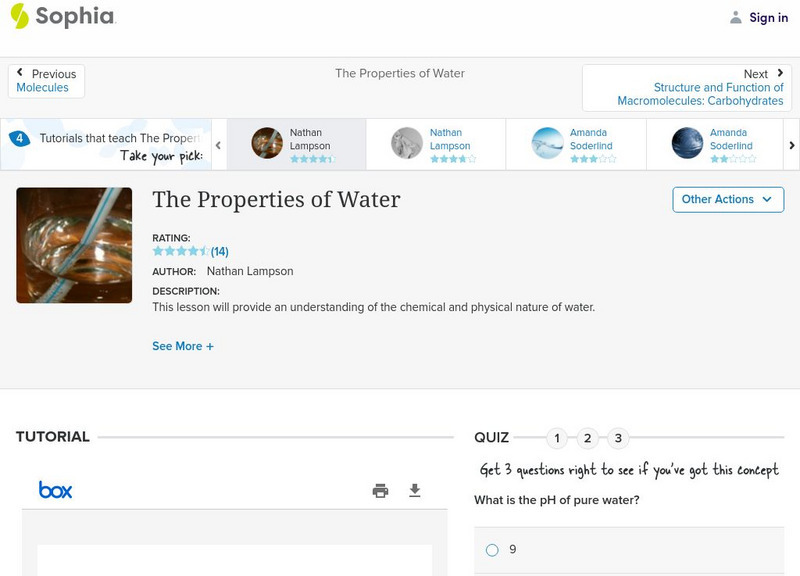

![Tops Learning Systems: Top Science: Water Domes [Pdf] Activity Tops Learning Systems: Top Science: Water Domes [Pdf] Activity](https://static.lp.lexp.cloud/images/attachment_defaults/resource/large/FPO-knovation.png)
